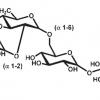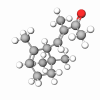An important discovery made by Allene Rosalind Jeanes and her team in the early 1960s is xanthan gum, a polysaccharide synthesized by the bacteria Xanthomonas Compestris. Xanthan gum is good for thickening ice cream, other foods, and skincare products. In addition, it is used in the food industry to keep products like oil and vinegar from separating; thus, it's a well-studied, known, and safe ingredient for skincare formulas.
If you shake a bottle of salad dressing, the oil and vinegar will appear to mix, but the oil does not indeed dissolve. In time, the two substances will separate again. But with xanthan gum added, the oil and vinegar will stay together long enough to get from bottle to plate. Xanthan gum is found in everyday products, from ketchup and steak sauces to cough syrups and skin lotions. The petroleum industry uses enormous quantities of xanthan gum to thicken the drilling mud that carries solid materials to the surface.
A natural carbohydrate, Xanthan gum is produced by a yeast-like microorganism. It has soothing properties and is used as an emulsifier and thickener to help with the consistency and stability of creams.
Xanthan gum is an acid-stable, heat-resistant, salt-tolerant glucomannan obtained as a biosynthetic ingredient. It is recommended as a thickener in aqueous solutions with a pH ranging from 2 to 10. Combined with guar gum, its aqueous solution yields a smoother texture and a more efficient thickener. Xanthan gum retains its viscosity with increasing temperature and synergizes with locust bean gum.









